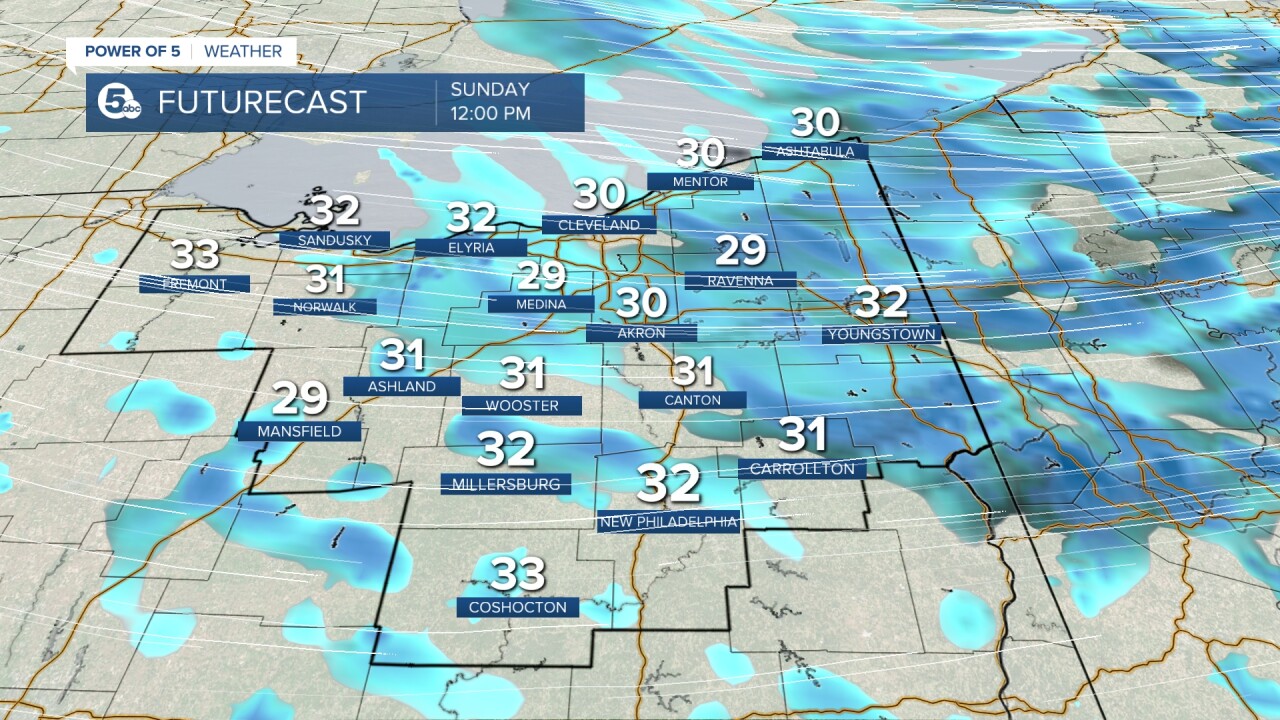Understanding Winter Weather Advisories And Their Effect On Schools

Table of Contents
Types of Winter Weather Advisories and Their Severity
Understanding the different levels of winter weather alerts is the first step in preparing for school closures. The National Weather Service uses three primary alert types: Advisory, Watch, and Warning. These alerts indicate varying levels of severity and the potential impact on daily life, including school attendance.
-
Advisory: A Winter Weather Advisory signifies that potentially hazardous winter weather is occurring, is imminent, or likely. While not as severe as a warning, an advisory still calls for caution and awareness. Expect conditions like light snow accumulation, patchy freezing drizzle, or periods of reduced visibility. Schools might operate normally, but transportation could be impacted.
-
Watch: A Winter Storm Watch indicates that conditions are favorable for the development of hazardous winter weather over the next 12 to 48 hours. This is a time to monitor forecasts closely and prepare for the possibility of severe weather. Schools may remain open, but administrators begin closely monitoring forecasts and road conditions.
-
Warning: A Winter Storm Warning means hazardous winter weather is happening or is about to happen. This is the most severe alert, signaling dangerous conditions like heavy snow accumulation, significant ice accumulation, or strong winds. School closures are highly probable during a Winter Storm Warning.
The specific weather conditions indicated in each advisory affect school decisions. For example, a Winter Weather Advisory predicting light snow accumulation might not trigger a closure, while a Winter Storm Warning with predictions of significant snowfall and icy roads would almost certainly lead to school closures or delayed openings.
How School Districts Decide to Close Due to Winter Weather Advisories
School districts base their closure decisions on a variety of factors, extending beyond the simple advisory level. They consider several key elements:
-
Road Conditions: Icy roads and heavy snowfall significantly impact bus routes and student safety. Real-time reports from transportation departments heavily influence closure decisions.
-
Bus Safety: School buses are large vehicles that are particularly vulnerable to icy or snow-covered roads. The ability of buses to operate safely is a paramount concern.
-
Temperature Extremes: Extremely low temperatures can pose risks to both students and staff waiting for transportation or walking to school.
-
Building Safety: Power outages or structural concerns due to heavy snow or ice can necessitate school closures for safety reasons.
-
Staff Ability to Get to School: If staff members are unable to safely reach the school, it becomes impossible to operate effectively.
School districts communicate closures through various channels:
- Email: Direct notifications are sent to parents and guardians.
- Website: Official school websites post closure information prominently.
- Social Media: Many districts use social media platforms (Facebook, Twitter) to rapidly disseminate information.
- Local News: Partnerships with local news outlets ensure broad reach.
School districts may also choose a delayed opening instead of a complete closure, allowing conditions to improve before the school day begins.
The Role of Technology in School Closure Decisions
Modern technology plays a vital role in informing school closure decisions. Advanced weather forecasting models provide highly accurate predictions, including snowfall amounts, ice accumulation, and wind speeds. Real-time road condition reports from transportation departments provide crucial up-to-the-minute data. Specialized software integrates weather data with transportation information, allowing administrators to make informed decisions quickly and efficiently.
Preparing for School Closings Due to Winter Weather Advisories
Proactive preparation is key to minimizing disruption during winter weather events. Parents should create a plan:
-
Backup Childcare Plan: Arrange for alternative childcare options in advance.
-
Essential Supplies: Stock up on non-perishable food, water, and any necessary medications.
-
Warm Clothing: Ensure children have adequate warm clothing, including hats, gloves, scarves, and waterproof outerwear.
-
Regular Updates: Check the school website and social media accounts frequently for the latest information.
Staying informed about road closures and transportation disruptions through local news and transportation authority websites is also vital.
Conclusion
Understanding winter weather advisories and school closings is crucial for effective winter planning. By familiarizing yourself with the different advisory levels, the factors influencing school closure decisions, and ways to prepare in advance, you can ensure the safety and well-being of your children and minimize disruptions to your routine. Stay informed and prepared this winter by consistently monitoring winter weather advisories and school announcements. Remember to check your local school district's website and social media for the most up-to-date information regarding school closings due to winter weather advisories. Proactive preparation regarding winter weather advisories and school closings will ensure a smoother winter season for everyone.

Featured Posts
-
 Huuhkajataehtien Kaellmanin Ja Hoskosen Puola Ura Paeaettymaessae
May 20, 2025
Huuhkajataehtien Kaellmanin Ja Hoskosen Puola Ura Paeaettymaessae
May 20, 2025 -
 Hmrc Speeds Up Calls With Voice Recognition Technology
May 20, 2025
Hmrc Speeds Up Calls With Voice Recognition Technology
May 20, 2025 -
 Bayern Munichs Bundesliga Celebration Delayed Leverkusen Holds Firm Kane Absent
May 20, 2025
Bayern Munichs Bundesliga Celebration Delayed Leverkusen Holds Firm Kane Absent
May 20, 2025 -
 May 9th Nyt Mini Crossword Puzzle Solutions
May 20, 2025
May 9th Nyt Mini Crossword Puzzle Solutions
May 20, 2025 -
 Jalkapallo Huuhkajien Avauskokoonpanossa Kolme Uutta Nimeae
May 20, 2025
Jalkapallo Huuhkajien Avauskokoonpanossa Kolme Uutta Nimeae
May 20, 2025
Latest Posts
-
 Malta Besegrat Jacob Friis Inleder Landslagskarriaeren Med Seger
May 20, 2025
Malta Besegrat Jacob Friis Inleder Landslagskarriaeren Med Seger
May 20, 2025 -
 Wwe News Road To Money In The Bank Ripley And Perez Secure Qualification
May 20, 2025
Wwe News Road To Money In The Bank Ripley And Perez Secure Qualification
May 20, 2025 -
 Latest Wwe Rumors Ronda Rousey Logan Paul Jey Uso And Big Es Relationship News
May 20, 2025
Latest Wwe Rumors Ronda Rousey Logan Paul Jey Uso And Big Es Relationship News
May 20, 2025 -
 Svart Men Segerrikt Jacob Friis Inleder Med Bortaseger Oever Malta
May 20, 2025
Svart Men Segerrikt Jacob Friis Inleder Med Bortaseger Oever Malta
May 20, 2025 -
 Wwe Money In The Bank Ripley And Perez Punch Their Tickets
May 20, 2025
Wwe Money In The Bank Ripley And Perez Punch Their Tickets
May 20, 2025
